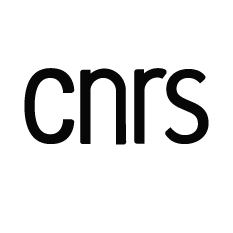Electron Channeling Contrast Imaging: a promising technique for materials science
SéminaireUniversité de Lorraine – CNRS – Arts et Métiers Paris Tech – LEM3, Metz, France Labex Damas – Université de Lorraine, Metz, France
In the aim of following the fast evolution of the industrial demands, developing innovative techniques that allow to understand and to predict the mechanical properties of materials has become a necessity for the Materials Science community. For instance, mechanical tests combined with microstructural investigations provide engineers with the necessary information to computationally predict the mechanical performance of components. Such experiments allow capturing footprints of the deformation mechanisms responsible for the changing microstructure [1,2].
The Transmission Electron Microscope (TEM) is one of the most well-known techniques for observing and characterizing dislocations in electron transparent thin foils (thickness of ≈ 100 nm with a useful field of view of few µm² only) [3,4,5]. Comprehensive dislocation studies at microscopic scale bring valuable information for extrapolating to the macroscopic mechanical response of materials and they can feed numerical advanced multiscale crystal plasticity models [6]. However, fundamental questions on the representativeness of observed phenomenon must be raised when extrapolating discussions to a millimeter-size specimen.
In this framework, we have successfully combined macroscopic mechanical testing of bulk specimen with a dislocation-scale characterization technique: Accurate Electron Channeling Contrast Imaging (A-ECCI). A-ECCI is a non-destructive procedure offering the ability to provide, inside a Scanning Electron Microscope (SEM), TEM-like diffraction contrast imaging of sub-surface defects (at a depth of about one hundred of nanometers) on centimetric bulk specimen with still unsurpassed resolutions [7,8].
Firstly, fundaments on the defect contrasts and the experiment procedure will be presented [9,10]. Secondly the full potentiality of A-ECCI for following the evolution of deformation microstructures will be highlighted in the case of a TiAl based alloy and a β-metastable Ti [11,12,13].
References[1] A. Guitton, S. Van Petegem, C. Tromas, A. Joulain, H. Van Swygenhoven, L. Thilly, App. Phys. Lett. 24, (2014).
[2] S. Van Petegem, A. Guitton, M. Dupraz, A. Bollhalder, K. Sofinowski, M.V. Upadhyay, H. Van Swygenhoven, L. Thilly, Exp. Mecha. 57, (2017).
[3] G.P. Bei, A. Guitton, A. Joulain, V. Brunet, S. Dubois, L. Thilly, C. Tromas, Philos. Mag. 93, (2013).
[4] A. Guitton, A. Joulain, L. Thilly, C. Tromas, Philos. Mag. 92, (2012).
[5] A. Guitton, A. Joulain, L. Thilly, C. Tromas, Sci. Rep. 4, (2014).
[6] K. Gourriet, P. Carrez, P. Cordier, A. Guitton, A. Joulain, L. Thilly, C. Tromas, Philos. Mag. 95, (2015).
[7] H. Mansour, J. Guyon, M.A. Crimp, N. Gey, B. Beausir, N. Maloufi, Scripta. Mater. 84-85, (2014).
[8] J. Guyon, H. Mansour, N. Gey, M.A. Crimp, S. Chalal, N. Maloufi, Ultramicroscopy 149, (2015).
[9] H. Kriaa, A. Guitton, N. Maloufi, Sci. Rep. 7, (2017).
[10] H. Kriaa, A. Guitton, N. Maloufi, Materials 12, (2019).
[11] A. Guitton, H. Kriaa, N. Maloufi, Materials 11, (2018).
[12] M. Ben Haj Slama, N. Maloufi, J. Guyon, S. Bahi, L. Weiss, A. Guitton, Materials 12, (2019).
[13] M. Ben Haj Slama, N. Maloufi, V. Taupin, A.D. Rollett, A. Guitton, to be submitted (2019).

